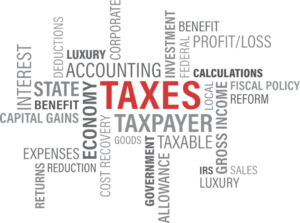Tax preference theory
Tax preference theory is one of the major theories concerning dividend policy in an enterprise. It was first developed by R.H. Litzenberger and K. Ramaswamy. This theory claims that investors prefer lower payout companies for tax reasons. They based this theory on observation of American stock market, and presented three major reasons why investors might prefer lower payout companies.
- Unlike dividend, long-term capital gains allow the investor to defer tax payment until they decide to sell the stock. Because of time value effects, tax paid immediately has a higher effective capital cost than the same tax paid in the future.
- Up until 1986 in USA all dividend and only 40 percent of capital gains were taxed. At a taxation rate of 50%, this gives us a 50% tax rate on dividends and (0,4)(0,5) = 20% on long-term capital gains. Therefore, investors might want the companies to retain their earnings in order to avoid higher taxes. As of 1989 dividend and capital gains tax rates are equal but deferral issue still remains.
- If a stockholder dies, no capital gains tax is collected at all. Those who inherit the stocks can sell them on the death day at their base costs and avoid capital gains tax payment.
Influences on dividend decision
The dividend decision is an integral part of a company's financial decision-making as it is explicitly related to the other two major decisions — investment and financing decision. Corporate taxation influences the dividend decision in more than one way. On the one hand, it influences the net income-after-tax of the company, which, in turn, determines the capacity of the company to pay dividends, and, on the other hand, it may have implications for the net value received by the shareholders.
Rate of corporate tax play an important role in determining the dividend policy, amount of dividend declared, distributed or paid by the company. A zero-dividend payout is not uncommon for young rapidly growing companies. However, companies may also be discouraged from paying higher dividends when these are doubly taxed once in the hands of the company and again in the hands of the shareholders. Personal income tax paid on dividend income amounts to a second tax on corporate profits.
References
- Al-Malkawi, H. A. N., Rafferty, M., & Pillai, R. (2010). Dividend policy: A review of theories and empirical evidence. International Bulletin of Business Administration, 9(1), 171-200.
- Baker, H. K., & Powell, G. E. (1999). How corporate managers view dividend policy. Quarterly Journal of Business and Economics, 17-35.
- Eugene F. Brigham, Louis C. Gapenski, Intermediate financial management, The Dryden Press 1990, p. 423-424
- Eugene F. Brigham, Fundamentals of financial management, The Dryden Press, 1992, p. 499-500
- Litzenberger, R. H., & Ramaswamy, K. (1980). Dividends, short selling restrictions, tax‐induced investor clienteles and market equilibrium. The Journal of Finance, 35(2), 469-482.
- Litzenberger, R. H., & Ramaswamy, K. (1982). The Effects of Dividends on Common Stock Prices Tax Effects or Information Effects?. The Journal of Finance, 37(2), 429-443.
- Singhania, M. (2006). Taxation and corporate payout policy. Vikalpa, 31(4), 47.
Author: Michał Pilarczyk
